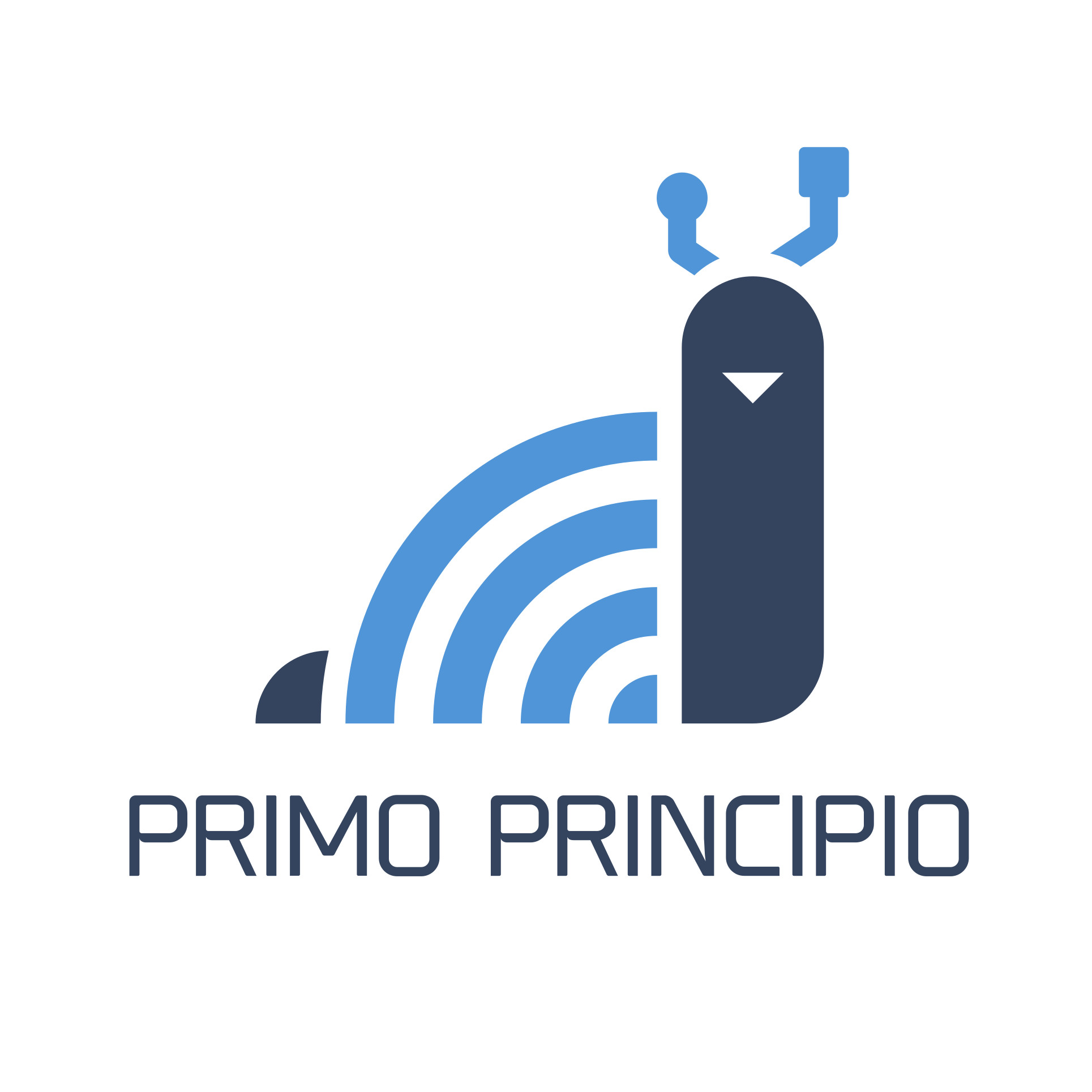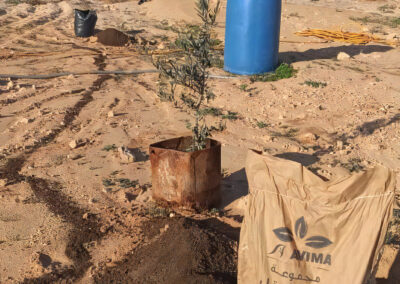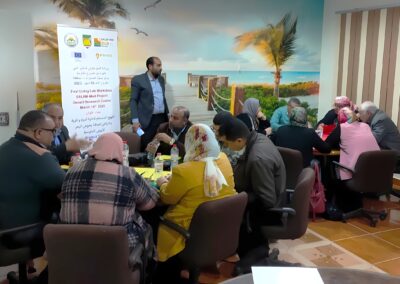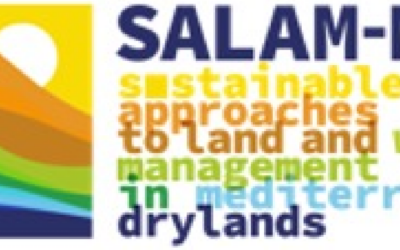Egypt
Technologies and Practical solutions developed here
Leveled terraces for water harvesting
Leader

Desert Research Center
Profile
Altitude: 26 m a.s.l.
Coordinates: 31°16’N 27° 9’E
Size: 200 km² scalable to ≈3000 km²
Mean annual temp: 19.6 °C
Mean annual prec: 100 -150 mm
Mean annual ETo: 2500 mm
Aridity index: 0.045
Local population: Bedouin,500.000
Main land uses, crops and animals:
agriculture is less than 7% (wheat,
barley, figs and olives); cattle (camels,
sheep, goats)
The Living Lab
The Egyptian Living Lab focuses on enhancing sustainable water and soil management along Egypt’s Northwestern Mediterranean coast, a region heavily reliant on rain-fed agriculture, primarily cultivating olives and figs. Given the area's vulnerability to climate change and water scarcity, the lab integrates innovative microbial-based solutions to improve soil fertility and plant resilience, tested through extensive field trials and laboratory experiments.
read more close
Key activities include rehabilitating water-harvesting infrastructures, such as restoring six crucial dikes in Wadi El Agarma, which helped reclaim approximately 3.5 acres of land and ensured water availability for olive cultivation. Advanced modeling tools developed in collaboration with CIHEAM Bari aid in precise water management and runoff prediction, significantly contributing to resource-efficient agriculture. Stakeholders were deeply involved through structured workshops, interviews, and SWOT analyses, revealing critical local challenges like poor infrastructure maintenance, limited market information, and insufficient training in best agricultural practices. The lab actively addresses these issues by promoting better governance, capacity-building initiatives, and supporting market integration. Achievements include effectively engaging women and youth, creating opportunities for local businesses, particularly in food processing and biofertilizers, and enhancing socio-ecological resilience through practical, science-backed solutions. The Egyptian Living Lab exemplifies collaborative innovation and highlights the importance of integrated resource management, climate-smart agriculture, and stakeholder engagement for sustainable development and enhanced community resilience in dryland regions.
Last News from the Living Lab
This section aims to foster dialogue and exchange of information among key Living Lab stakeholders, continuously updating all participants on progress and news about activities carried out.
Soil Profiling
Field Photos
Title
Sed ut perspiciatis unde omnis iste natus error sit voluptatem accusantium doloremque laudantium, totam rem aperiam, eaque ipsa quae ab illo inventore veritatis et quasi...
Stakeholders
The Living Lab is based on the collaboration of different stakeholders, each of whom brings useful skills and resources to address the area’s challenges in an integrated way. Their active participation enables the development of effective and shared solutions. This section presents the main stakeholders and their contributions to the project.
Would you like to be added among the stakeholders?
Sign up and we will add you.
Technologies and Practical solutions developed in this Living Lab
Click on the cards below to learn more about the individual technologies tested in the living lab.

Leveled terraces for water harvesting
Use Case Contact
Mohamed Ahmed Abdalla drmohameddrc@gmail.com
Hussien Mohamed
drc20006@yahoo.com
Ahmed El shenawy
a.elshenawy.drc@outlook.com
References
Co-designing of Innovative Nature-Based Solutions for Sustainable Land and Water Management: The Living Lab Experience in Salam-Med PRIMA Project (Under Review)
Zenodo References
Stakeholders Signup

Primo Principio S.c.a.r.l.
Primo Principio is an Italian SME with 10 years of experience in industrial research and development of software solutions, data analytics, predictive modeling applied to the world of agronomy, plant phytopathology and simulation of complex biological phenomena. It has developed its own technological solution (www.wiforagri.com ) which it markets as Saas (Software as a Service).
It currently works in Italy, Slovenia and Greece and actively and continuously participates in regional, national and European research, development and innovation projects in its field. Thanks to this strong inclination towards research and continuous innovation, it has been able to integrate highly verticalized technologies and skills in the design and implementation of DSS for agricultural support, it has been a supplier to regional agencies for agricultural development in Sardinia, Friuli Venezia Giulia and Lazio and provides its technologies and consultancy to producer associations, agronomic studies (as well as small and large agricultural companies).
It has a multidisciplinary team that knows how to combine engineering, software development and data analysis skills with agronomic, biological and bioinformatics profiles.

Abinsula S.r.l.
Founded in 2012, Abinsula is one of the main Italian players in the field of embedded, web and mobile solutions. Its core business is represented by the automotive sector, a domain in which – thanks to a very high specialization – it has managed to position itself as a supplier of innovative ICT solutions at a global level. The company’s rapid growth has been supported by the development of ABILITY, a Linux distribution for embedded systems, which over time has found application in various fields, as well as being a central product in the automotive solutions domain.
For several years, the automotive sector has been accompanied by the development of solutions applied to the agritech and healthcare sectors. Abinsula also offers extensive experience in common embedded technologies, such as wired and wireless communication technologies, mobile applications for Android, iOS and other smart devices and the development of IoT platforms. Abinsula’s success is based on continuous research and development, inspired by the desire to introduce innovative solutions to the market that can provide answers to current or future problems and needs.






